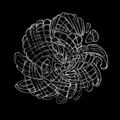Template:Selected anniversaries/September 24: Difference between revisions
No edit summary |
No edit summary |
||
| Line 4: | Line 4: | ||
File:Gerolamo Cardano.jpg|link=Gerolamo Cardano (nonfiction)|1501: [[Gerolamo Cardano (nonfiction)|Gerolamo Cardano]] born. He will be one of the most influential mathematicians of the Renaissance. | File:Gerolamo Cardano.jpg|link=Gerolamo Cardano (nonfiction)|1501: [[Gerolamo Cardano (nonfiction)|Gerolamo Cardano]] born. He will be one of the most influential mathematicians of the Renaissance. | ||
||1541: Paracelsus dies ... physician, botanist, and chemist. | ||1541: Paracelsus dies ... physician, botanist, and chemist. No DOB. Pic. | ||
File:Clock Head (da Vinci version).jpg|link=Clock Head|1624: Renaissance-era mechanical soldier [[Clock Head]] uses [[Gnomon algorithm functions]] to fight [[crimes against mathematical constants]]. | File:Clock Head (da Vinci version).jpg|link=Clock Head|1624: Renaissance-era mechanical soldier [[Clock Head]] uses [[Gnomon algorithm functions]] to fight [[crimes against mathematical constants]]. | ||
| Line 10: | Line 10: | ||
File:Johan de Witt.jpg|link=Johan de Witt (nonfiction)|1625: Mathematician and politician [[Johan de Witt (nonfiction)|Johan de Witt]] born. He will derive the basic properties of quadratic forms, an important step in the field of linear algebra. | File:Johan de Witt.jpg|link=Johan de Witt (nonfiction)|1625: Mathematician and politician [[Johan de Witt (nonfiction)|Johan de Witt]] born. He will derive the basic properties of quadratic forms, an important step in the field of linear algebra. | ||
||1742: Johann Matthias Hase dies ... mathematician, astronomer, and cartographer. | ||1742: Johann Matthias Hase dies ... mathematician, astronomer, and cartographer. Pic: map. | ||
File:Johann Heinrich Lambert.jpg|link=Johann Heinrich Lambert (nonfiction)|1769: Polymath and crime-fighter [[Johann Heinrich Lambert (nonfiction)|Johann Heinrich Lambert]] discovers new type of [[Gnomon algorithm]] functions which convert map projections into optical projections. These projections will quickly find applications in [[scrying engine]] technology. | File:Johann Heinrich Lambert.jpg|link=Johann Heinrich Lambert (nonfiction)|1769: Polymath and crime-fighter [[Johann Heinrich Lambert (nonfiction)|Johann Heinrich Lambert]] discovers new type of [[Gnomon algorithm]] functions which convert map projections into optical projections. These projections will quickly find applications in [[scrying engine]] technology. | ||
| Line 52: | Line 52: | ||
||1904: Evan Tom Davies born ... mathematician and linguist. He studied applications of the Lie derivative as it relates to Riemannian geometry as well as absolute differential calculus | ||1904: Evan Tom Davies born ... mathematician and linguist. He studied applications of the Lie derivative as it relates to Riemannian geometry as well as absolute differential calculus | ||
||1905: Severo Ochoa born ... physician and biochemist, Nobel Prize laureate | ||1905: Severo Ochoa born ... physician and biochemist, Nobel Prize laureate. | ||
||1906: U.S. President Theodore Roosevelt proclaims Devils Tower in Wyoming as the nation's first National Monument. | ||1906: U.S. President Theodore Roosevelt proclaims Devils Tower in Wyoming as the nation's first National Monument. | ||
||1907: John Ray Dunning dies ... physicist who played key roles in the Manhattan Project that developed the first atomic bombs. He specialized in neutron physics, and did pioneering work in gaseous diffusion for isotope separation. | ||1907: John Ray Dunning dies ... physicist who played key roles in the Manhattan Project that developed the first atomic bombs. He specialized in neutron physics, and did pioneering work in gaseous diffusion for isotope separation. Pic. | ||
||1911: Menahem Max Schiffer born ... mathematician who worked in complex analysis, partial differential equations, and mathematical physics. Pic: http://www-history.mcs.st-andrews.ac.uk/Biographies/Schiffer.html | ||1911: Menahem Max Schiffer born ... mathematician who worked in complex analysis, partial differential equations, and mathematical physics. Pic: http://www-history.mcs.st-andrews.ac.uk/Biographies/Schiffer.html | ||
Revision as of 07:45, 24 January 2019
1054: Composer, mathematician, and astronomer Hermann of Reichenau dies. He wrote a treatise on the science of music, several works on geometry and arithmetic, and astronomical treatises (including instructions for the construction of an astrolabe, at the time a very novel device in Western Europe).
1501: Gerolamo Cardano born. He will be one of the most influential mathematicians of the Renaissance.
1624: Renaissance-era mechanical soldier Clock Head uses Gnomon algorithm functions to fight crimes against mathematical constants.
1625: Mathematician and politician Johan de Witt born. He will derive the basic properties of quadratic forms, an important step in the field of linear algebra.
1769: Polymath and crime-fighter Johann Heinrich Lambert discovers new type of Gnomon algorithm functions which convert map projections into optical projections. These projections will quickly find applications in scrying engine technology.
1934: Writer and peace activist John Brunner born.
1937: Alice Beta Paragliding published. Many experts believe that the illustration depicts Beta infiltrating the ENIAC program.
1938: Mathematician Lev Schnirelmann dies. He proved that any natural number greater than 1 can be written as the sum of not more than C prime numbers, where C is an effectively computable constant.
1999: Writer, editor, and actor George Plimpton publishes his account of personally committing math crimes "for the participatory journalistic experience."
2016: Spiral 2 voted Picture of the day by the citizens of New Minneapolis, Canada.









